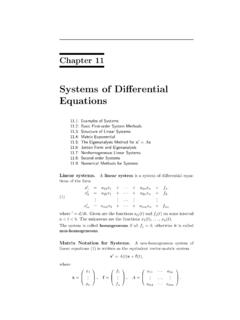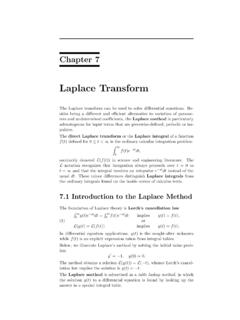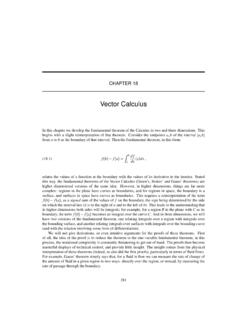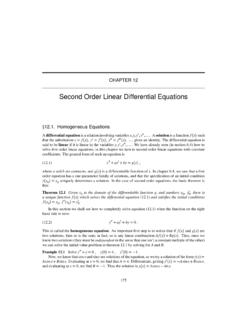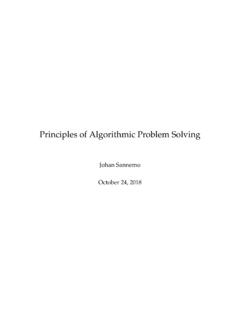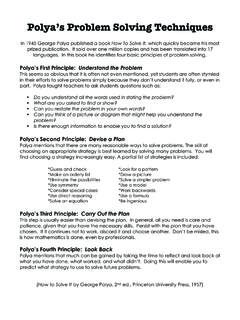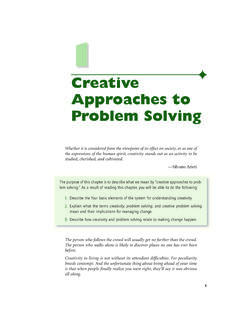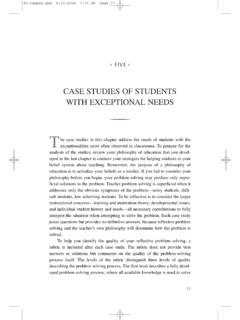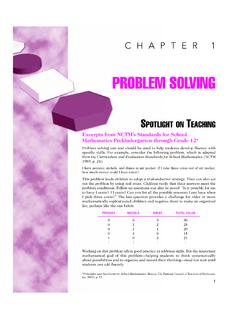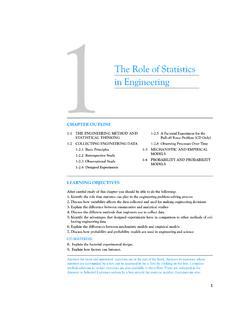Transcription of Fostering Mathematical Thinking and Problem Solving
1 308 Teaching Children Mathematics / February 2007 Nicole Rigelman, is an assistant professor of math-ematics education in the School of Education at George Fox University in New-berg, Oregon. She is interested in teaching and learning through Mathematical Problem Solving and Mathematical discourse. By Nicole R. RigelmanFostering Mathematical Thinking and Problem Solving : The Teacher s RoleEffective Mathematical Problem solvers are flexible and fluent thinkers. They are confi-dent in their use of knowledge and processes. They are willing to take on a challenge and per-severe in their quest to make sense of a situation and solve a Problem .
2 They are curious, seek pat-terns and connections, and are reflective in their Thinking . These characteristics are not limited to Problem solvers in mathematics or even in schools; they are characteristics desired for all individu-als in both their professional and personal lives (National Research Council [NRC] 1985; NCTM 1989, 2000; Steen 1990). These characteristics help individuals not only learn new things more easily but also make sense of their existing knowl-edge. Problem - Solving habits of mind prepare individuals for real problems situations requiring effort and thought, lacking an immediately obvious strategy or solution.
3 To develop Problem - Solving habits of mind, students need experiences work-ing with situations that they problematize with the goal of understanding and developing solution methods that make sense for them (Hiebert et al. 1996, p. 19).Current mathematics education reforms at both the state and the national level suggest that stu-dents should have such learning opportunities and recommend that increased attention be given to Problem Solving in all areas of the curriculum (NCTM 1989, 2000). However, simply asking teachers to increase the attention given to prob -lem Solving does not ensure a focus on Fostering students understanding and sense making through Problem article focuses on two teachers implemen-tation of a patterning task and discusses ways in which the teachers guide and manage the discus-sion about the task.
4 Also described are important considerations for teachers who want to foster their students Mathematical Thinking and Problem Solving . Two Approaches toProblem- Solving InstructionThe vignettes in figures 1 and 2 present a picture of instruction. Although both teachers are respond-ing to the same recommendations for a focus on Copyright 2007 The National Council of Teachers of Mathematics, Inc. All rights material may not be copied or distributed electronically or in any other format without written permission from Children Mathematics / February 2007 309 Photograph by Brian Becker; all rights reservedproblem Solving , they offer students very different learning focus in classroom A (fig.)
5 1) is on finding a single strategy to obtain the answer to the Problem . This pursuit is followed by writing up the response to the Problem according to specified criteria: restating, explaining, and verifying. This teacher s view of Problem Solving , and perhaps mathematics, is that only one way exists to correctly solve the Problem and that only one way can be used to write up a response to a Problem . By contrast, the instruc-tional focus in classroom B (fig. 2) is on exploring the relationships within the Problem , sharing the possibilities, and considering how this Thinking may extend to any figure in the pattern.
6 This teacher s view of Problem Solving is that multiple ways exist to solve a Problem and that Problem Solving is a process of exploring, developing methods, discuss-ing methods, and generalizing results. Students in classroom B at first have a chance to explore the Problem individually; they then share their ideas and Thinking ; and finally they individually have an opportunity to reflect on what has been shared, explore whether they can create general statements or formulas, and generally construct their own meaning of the dilemma is that the instructional approaches advocated by many commercially available prob -lem- Solving resources and curricula encourage teachers to train their students with how to approaches to Problem Solving , much like those used by the teacher in classroom A.
7 They develop students as Problem performers, students focusing on an end or completion of a Problem . Teachers using these materials may present problems that can be solved without much cognitive effort; supply or expect the use of a specific heuristic or strategy for Solving a Problem ; or provide their students with specific formats for their Problem response or write-up ( , restate the Problem , explain your Thinking , check your work).When students experience these learning oppor-tunities, they develop a narrowly defined view of mathematics and Problem Solving .
8 These instruc-tional approaches can leave students dependent on prescribed processes and unable to readily face problems without an immediately obvious strategy. The short-term goal of developing students who complete the Problem ( Problem performers) may be attained, but the more important long-term goal of developing flexible and fluent Mathematical thinkers ( Problem solvers) may not Classrooms A and B: The Teachers Actions and DecisionsWhen comparing classroom A (fig. 1) with class-room B (fig. 2), we can see some similarities. The teachers pose similar problems, and they ask students for ideas about the Problem .
9 We see evi-dence of students interacting with one another by building on one another s ideas. We can also see some differences, differences that can be sig-nificant when viewing Problem Solving beyond prescribed formats or strategies. Although the teacher in classroom A may be preparing stu-dents to respond to a set of questions aligned with a particular way of approaching Problem Solving ( , restating the Problem , explain-310 Teaching Children Mathematics / February 2007ing how you found the answer, checking your work), is she preparing students to problematize and make sense of situations and invent solution methods?
10 Do the students give evidence that they are Thinking flexibly and fluently about the Problem and considering alternative strategies? The students in classroom A are not engaged in the same level of Thinking and reflection as the students in classroom B. The learning opportuni-ties in these classrooms do not yield the same educational outcomes. The main differences and their corresponding outcomes are described more fully in the following problemThe Problem posed in classroom A is straight-forward, asking how many tiles are in the twenty-fifth figure of this pattern.




